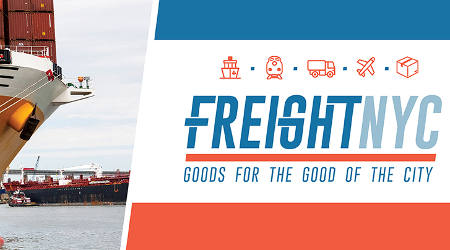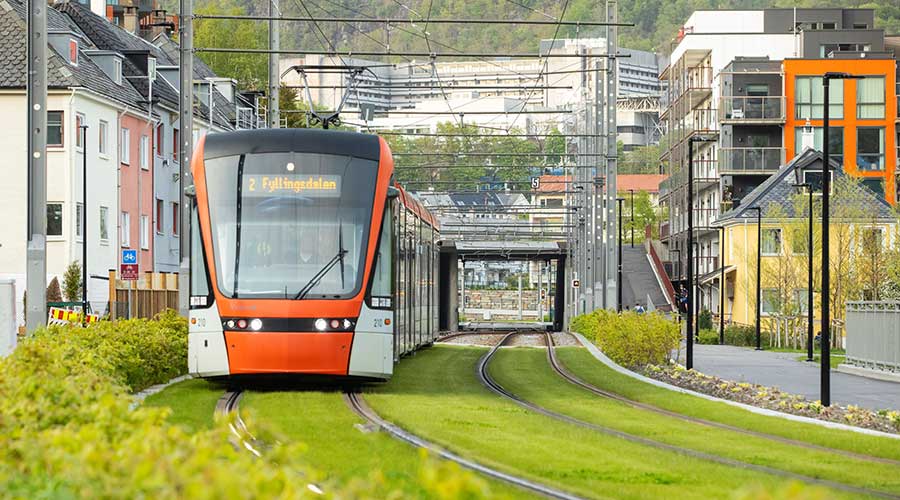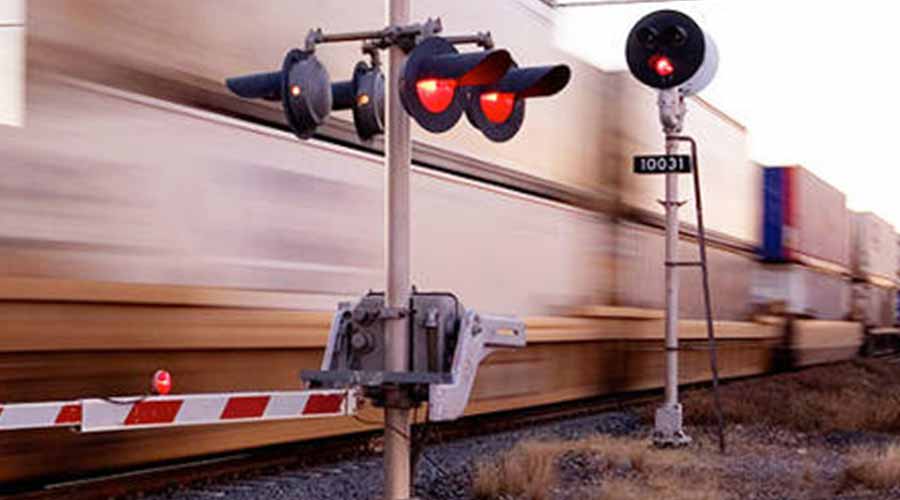Stay updated on news, articles and information for the rail industry
7/17/2018
Rail News: Intermodal
'Freight NYC' aims to modernize rail, maritime infrastructure in the Big Apple

Yesterday, New York City Mayor Bill de Blasio joined federal, state and local officials to unveil Freight NYC, a $100 million plan designed to overhaul the city's aging freight distribution systems through strategic investments aimed at modernizing rail and maritime infrastructure and creating new distribution facilities.
The city of New York plans to work with the Port Authority of New York and New Jersey to improve marine terminals and barging operations, and modernize and expand rail lines and freight facilities. Projects would include reactivating underutilized rail lines by constructing new transload facilities within the existing rights of way and new passing lanes to alleviate train congestion; developing a barge terminal to serve the Hunts Point Food Distribution Center in the Bronx so produce and other food products can reach the area by water instead of by truck; and constructing a barge terminal at the South Brooklyn Marine Terminal in Sunset Park.
As part of Freight NYC, the city also plans to develop new distribution, warehousing and transload facilities through public-private partnerships. On July 20, the New York City Economic Development Corp. (NYCEDC) will release a request for proposals (RFP) for a private partner to build an urban distribution center at the Brooklyn Army Terminal totaling at least 500,000 square feet. Also next week, the NYCEDC will release an RFP for a 4-acre site near John F. Kennedy Airport to develop an air cargo and distribution facility.
"Our city depends on crucial but aging marine, rail and highway infrastructure and relies upon trucks to move nearly 90 percent of freight," said de Blasio in a press release. "As the city's population continues to grow and consumers increasingly demand near-instant deliveries, local freight volumes will grow an estimated 68 percent by 2045, further choking traffic and impeding commerce. This challenge is particularly acute in the 'last mile' of distribution, in which trucks bring goods from port facilities and central warehouses, often located in neighboring states like New Jersey, to consumers over city streets and arteries."
CSX looks forward to engaging the city about its plans to modernize the area's freight-rail network, said Rodney Oglesby, the Class I's resident vice president for Pennsylvania, New York and New Jersey.
"CSX plays a critical role in a sustainable supply chain that supports nearly every sector of the region's economy. We proudly deliver construction materials, food products, retail consumer goods and other materials on which New Yorkers rely," he said.
New York & Atlantic Railway also welcomes the release of Freight NYC to promote the development of sustainable freight-rail infrastructure in New York City, said James Bonner, the short line's president.
"We are committed to collaborative efforts to advance rail transload investments in Brooklyn and Queens. Those investments will ensure overall truck miles travelled are reduced to help alleviate regional and local traffic congestion," he said. "For every rail car traveling in the city, we are taking four trucks off of streets."


 2025 MOW Spending Report: Passenger-rail programs
2025 MOW Spending Report: Passenger-rail programs
 Gardner steps down as Amtrak CEO
Gardner steps down as Amtrak CEO
 Guest comment: Oliver Wyman’s David Hunt
Guest comment: Oliver Wyman’s David Hunt
 Women of Influence in Rail eBook
Women of Influence in Rail eBook
 railPrime
railPrime








